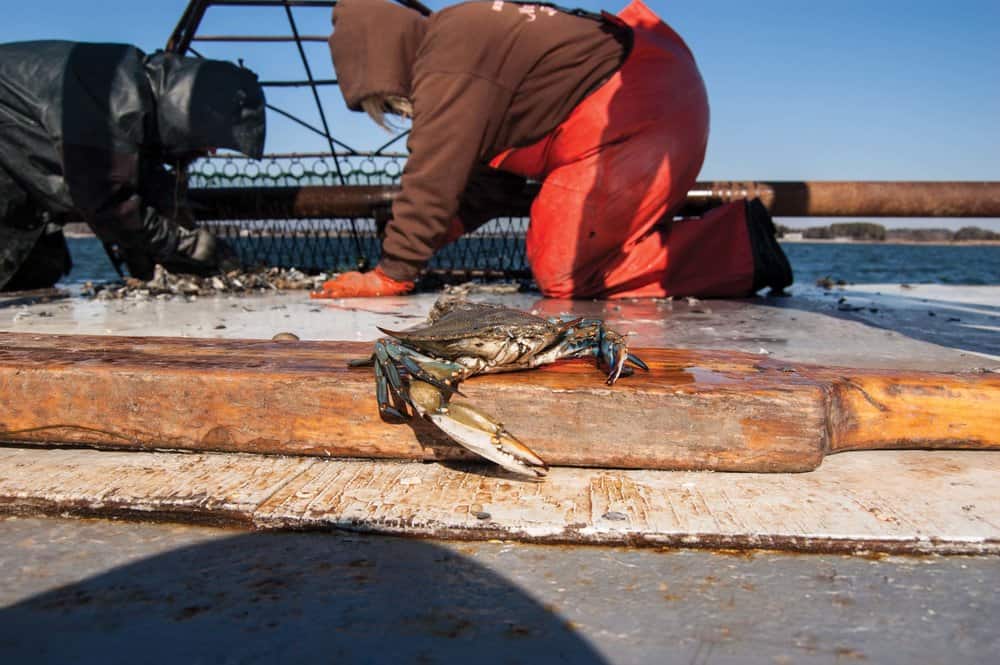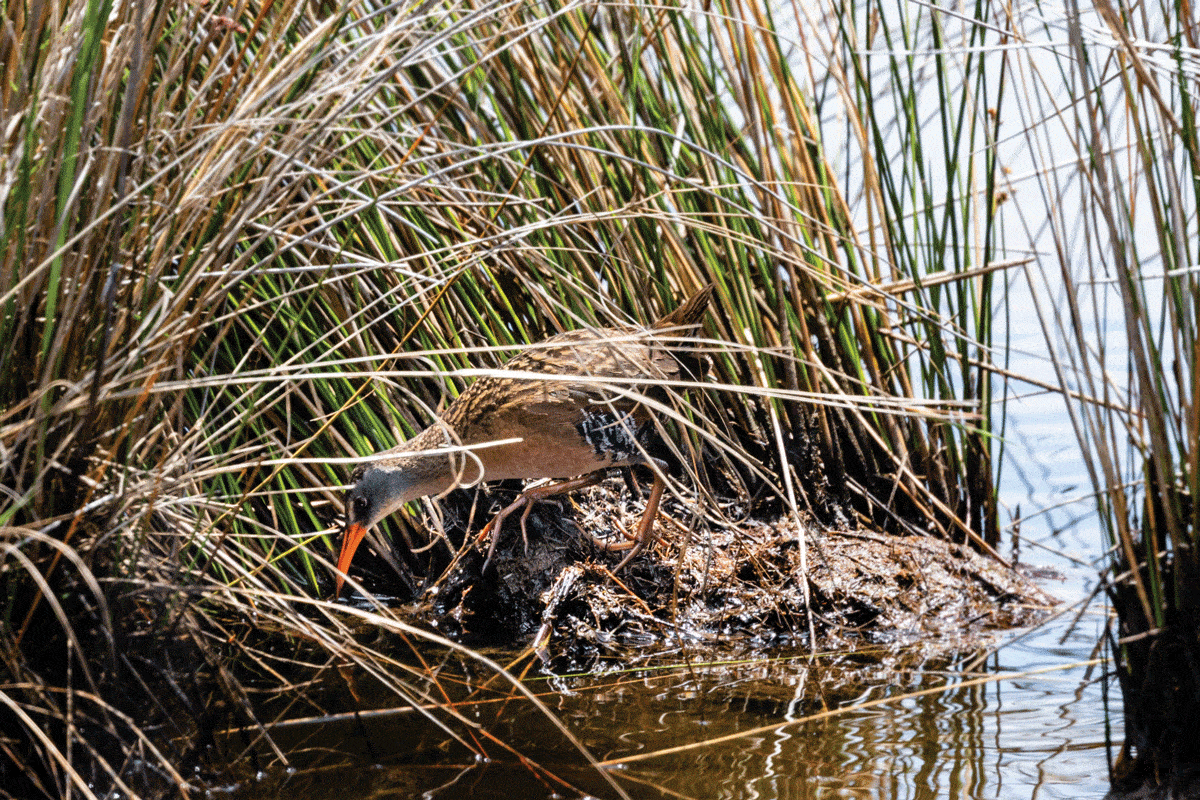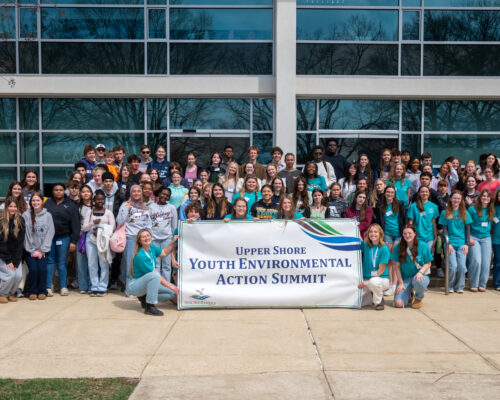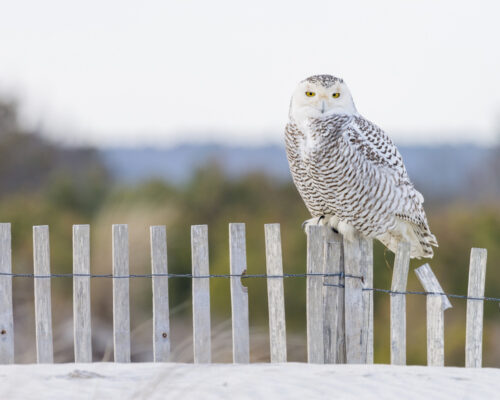Story & Photos by Marty LeGrand
Photos by Marty LegrandFrom the warmth of his workboat’s cabin, Roger Morris checks his GPS and begins the drill he’ll perform nearly 900 times this winter. It’s a routine he’s honed, in one form or another, over four decades on the Bay. After aligning Mydra Ann on the proper coordinates, he steps outside into a frigid February morning to deploy the boat’s big dredge. The winch’s steel chain unspools noisily, shivering water, until it jerks to a halt at Morris’s command. From the cockpit helm station, he adjusts his speed as the dredge’s six-foot-wide maw skims the soft bottom of Eastern Bay. He fills the dredge’s gullet, a rectangular metal basket lined with narrow mesh, for precisely one minute at a steady pace of about three knots. It’s tricky work. If the towed dredge fills too quickly, it will skip on the bottom. If he lets out too much chain, it becomes a ponderous mudplow. As it is, he pauses briefly while raising the dredge, straining it of silt, before hoisting it onto the stern. There, his mate and two Maryland Department of Natural Resources (DNR) employees wait to receive it.
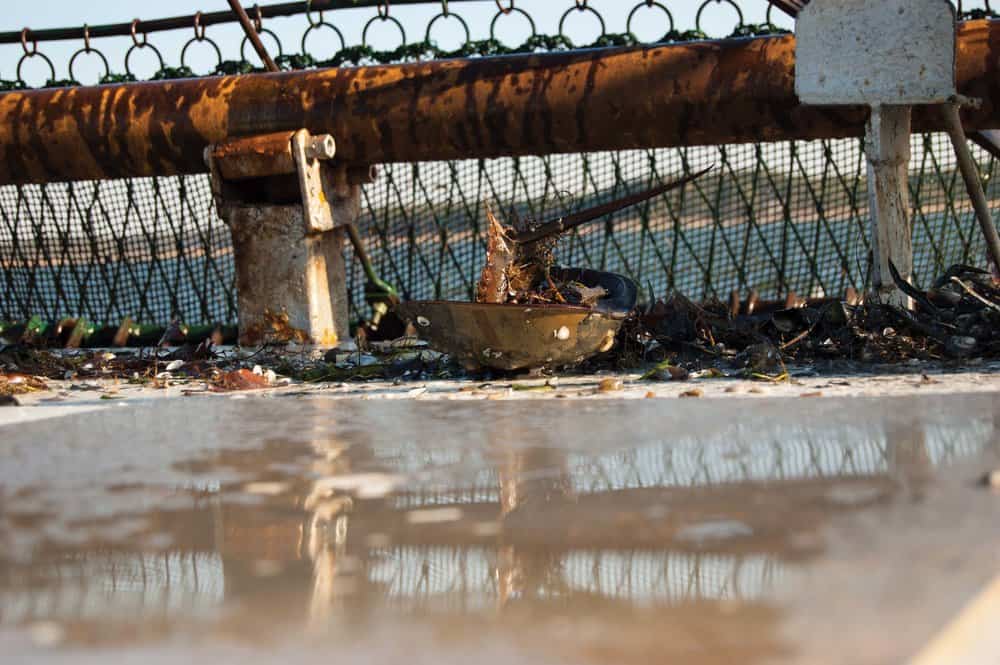
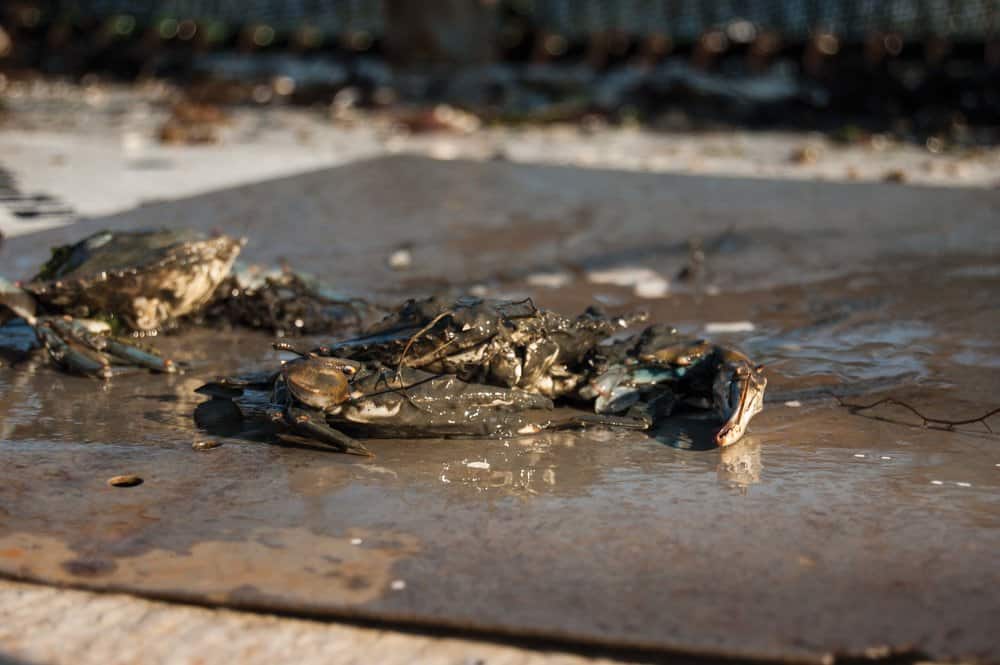
Waterman John Elliott and Heather Brown, a DNR natural resources manager, grab either end of the rig and empty its liner onto the dredge platform. It’s 27 degrees, but brisk northwest winds make it feel like 16. From their knees, Brown and Elliott, wearing insulated gloves, methodically sort through the aquatic mishmash: matted leaves, strands of widgeon grass, empty oyster shells, an upturned horseshoe crab, its spiky tail tilting like a broken mast, and small slimy creatures that cling to anything handy.
When they find what they’re looking for, they slide three mud-splotched blue crabs toward DNR fisheries biologist Shaun Miller, whose job it is to measure, weigh and determine the crabs’ gender before tossing them overboard. Miller records the data along with water depth, temperature and salinity, as well as the tow’s beginning and end coordinates, in a spiral notebook whose reckonings will help determine how many crabs watermen like Morris will be permitted to harvest this year.
Begun almost 30 years ago, the Blue Crab Winter Dredge Survey represents the most scientifically rigorous index of the Bay’s blue crab population. Prior to 1990, Maryland and Virginia compiled separate, incompatible crab indexes. Having synchronized their sampling protocols, the two states now rely on the data collected every winter from 1,500 sites to co-manage the Bay’s most iconic and commercially valuable fishery. The work Morris and his boat-mates perform from mid-December through March, combined with Virginia’s parallel efforts, give fisheries managers a picture of the health of the Baywide crab population and its breeding stock.
The survey results, released in late spring, also represent a scouting report on crab season, a prospectus of keen interest to policy-makers, watermen, recreational crabbers and, whether they realize it or not, Bay seafood lovers. Fishery managers from Maryland and Virginia make regulations based on these numbers and their longer-term implications. The 2017 survey, for example, revealed a slight decline in the Bay’s overall crab population, driven largely by a 54 percent drop in juvenile crab abundance that could portend decreased spawning. One year’s blip doesn’t make a trend, especially among young crabs, whose abundance can be especially volatile. But both states decided to exercise caution, shortening last fall’s crabbing seasons and reducing bushel limits.
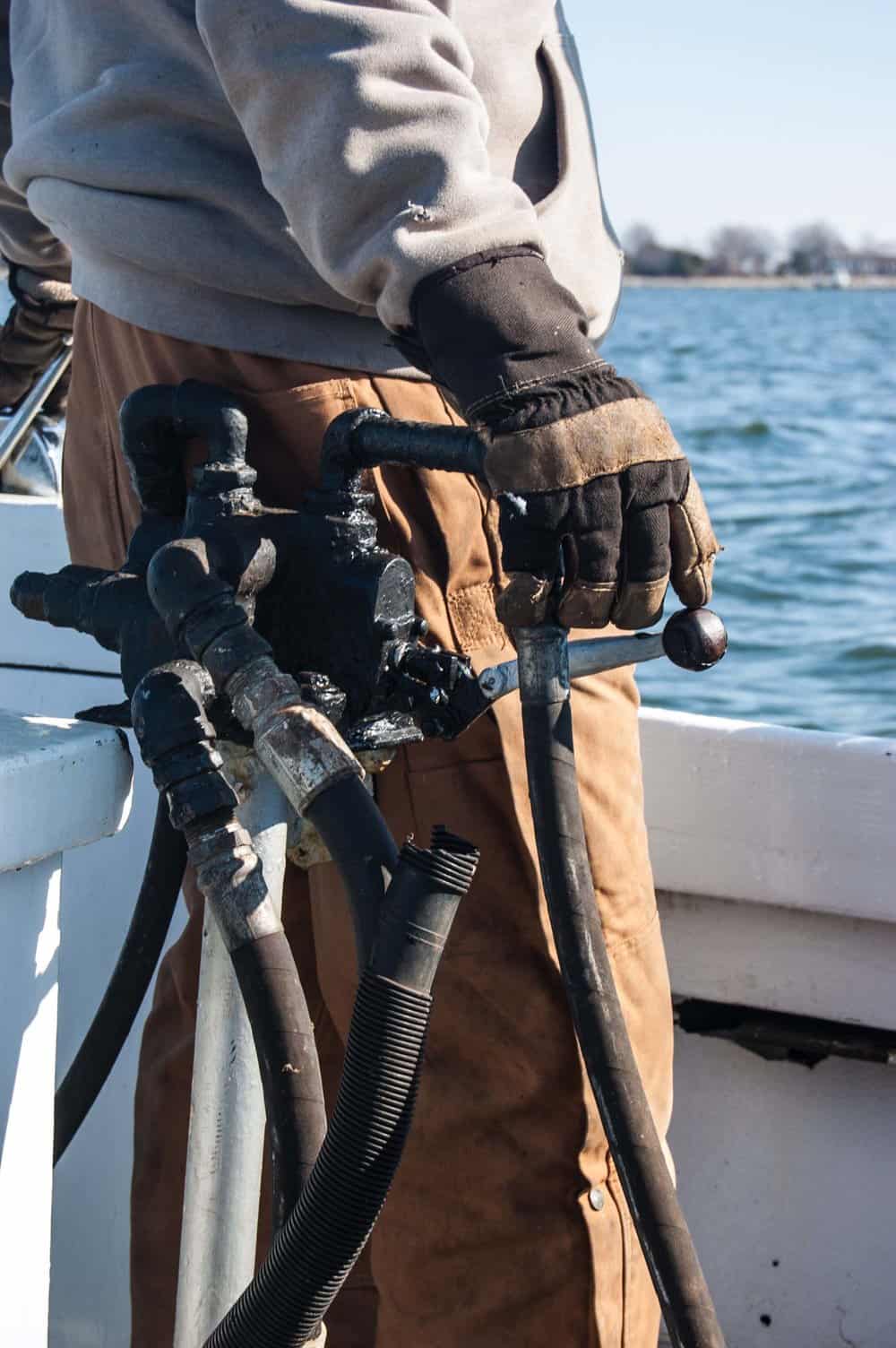
It’s no secret that policy-makers and crab purveyors don’t always see eye to eye on the robustness of the Bay’s stock. What biologists may view as an overfished population on the cusp of collapse, watermen perceive less alarmingly as the ebb in one of nature’s age-old rhythms. Historically, the blue crab’s apolitical, migratory life cycle—mature females leave Maryland in the fall to spawn in the higher-salinity waters of Virginia’s lower Bay—once pitted the commonwealth and its northern neighbor against one another for maternal crustacean harvesting rights.
Under crabbing detente, however, the bi-state Chesapeake Bay Stock Assessment Committee (CBSAC) relies on the winter dredge survey’s cold-hard crab math and common-sense science to regulate the fishery for the benefit of both states and Bay watermen, who have a say in how proposed harvest limits are achieved.
“The dredge survey is the cornerstone of blue crab management. We really wouldn’t be anywhere without it,” says Glenn Davis, a DNR stock assessment biologist and CBSAC’s current chairman. “It’s given us a strong signal as far as population trends and it matches very well with commercial harvest trends. It’s given us a very accurate depiction of the relative size of the population.”
Watermen give it wary credence. “Some years they’re fairly accurate, some years they miss,” says Robert T. Brown, president of the Maryland Watermen’s Association. “It’s a science. It’s hit-and-miss.”
Ultimately, the survey is only as good as its data harvesters, who work in conditions that the crabs simply won’t. That’s by design. Winter dredging provides the most reliable count because the crabs are stationary, having buried themselves and suspended all but the most basic functions—they take in oxygen, but not food—until warmer water temperatures revive them in the spring. Two boats get the job of counting these beautiful, slumbering swimmers, Mydra Ann in Maryland and Bay Eagle, a Virginia Institute of Marine Science research vessel.
In Mydra Ann’s cabin, en route to the next sampling site, Morris says that before DNR first contracted with him 16 years ago, he spent his winters dredging crabs off Cape Charles, Virginia, the only state that still had a winter dredge fishery then.
“I could drudge more than fifty bushels by ten a.m. in those days,” he recalls. Like other dredgers who scraped the lower Bay, he was catching mostly “sponge” crabs, egg-bearing females. When the estimated crab population plummeted in 2007 to an alarming low point, authorities revamped their management policy. To safeguard the species’ vulnerable procreators, spawning-age females, both states and the Potomac River Fisheries Commission agreed to reduce the female crab harvest by 34 percent. The following year, Virginia closed its winter dredging season (which has yet to reopen) and Maryland shortened its fall season.
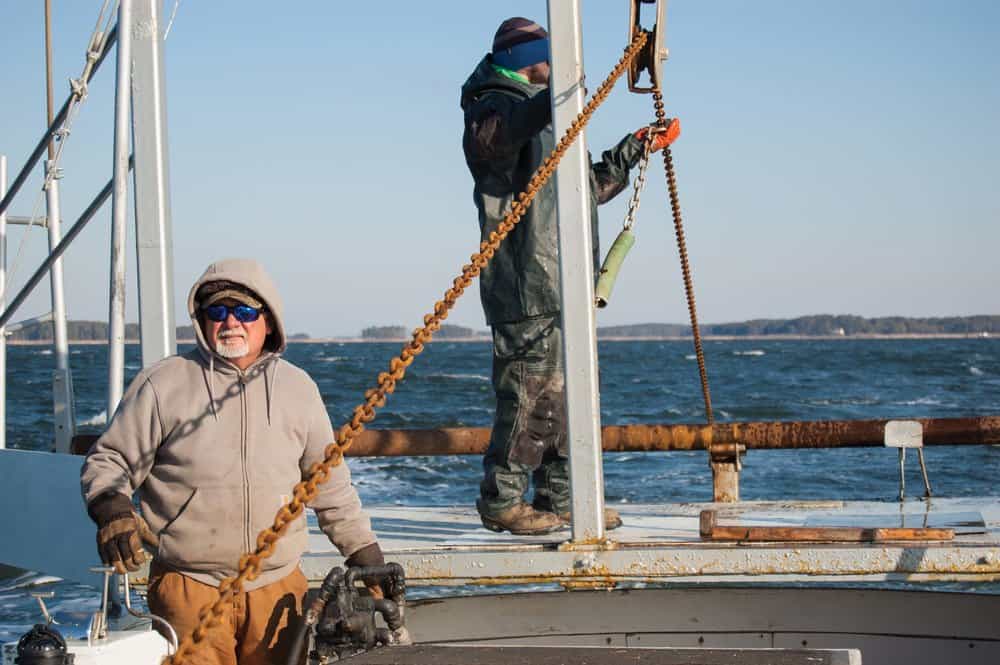
“Until that point, most of the crab regulations were broad-based, mostly targeting [fishing] gears and effort,” Davis explains. For the first time, policy-makers focused instead on the size and sustainability of the spawning stock. “We wanted to keep the exploitation rate [percentage of crabs harvested] below a certain level to send as many females down the Bay to the spawning grounds as possible,” Davis says of DNR’s new approach.
Within a couple years, the crabs’ steady, decade-long decline reversed course. Were they responding to nature or regulatory nurturing?
“Crabs are funny animals,” Davis says. “There’s always the possibility that we got lucky, but from the get-go we saw a greater response from the population than we had expected.” In 2017, the winter dredge survey estimated there were 254 million spawning-age female crabs, a record, and a pretty robust total population of 455 million.
A record-breaking cold snap in early January and below-average temperatures this winter will test the crabs’ resiliency in 2018, particularly in Maryland, where lower water salinities combined with frigid bottom temperatures can easily prove fatal. Despite a first-day bonanza—300-plus mostly juvenile crabs in the Honga River—Mydra Ann’s crew has counted modest numbers of crabs thus far. “It’s definitely not a banner year,” Morris says of the season ahead, “but there’s nothing to indicate it’s dire.”
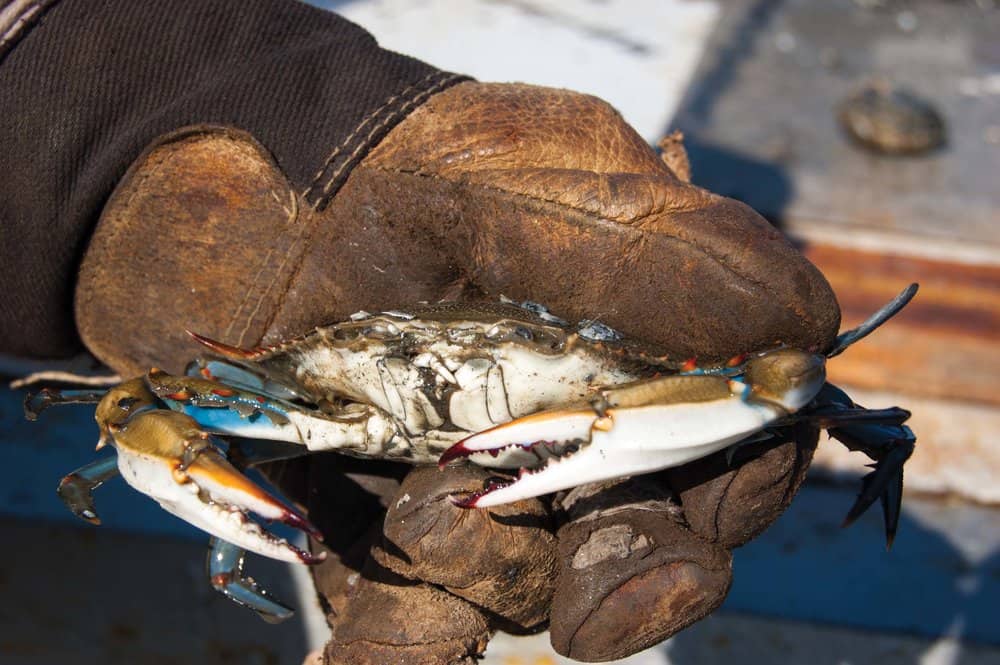
A fifth-generation Dorchester County waterman, he started trot-lining at 14 and crab potting with his father not long after. Now a gray-haired recent grandfather, he gave up oystering in the winter because it’s not profitable.
“That’s why I’m glad I’ve got a day job,” Morris says of this gig, which has him on the water five days a week, weather permitting. Mydra Ann, a 45-foot deadrise, samples all of Maryland’s 750 sites, including upper Bay tributaries, the mainstem from Pooles Island to Virginia, and the Potomac River. Before they’re done, the crew also re-samples about 100 heavily populated sites in March to measure winter mortality.
Morris sees his role as providing fishery biologists with a waterman’s know-how. “I’m going to make sure I do it right. Every crab I catch [on the survey] I can catch in summer time,” he says. So far in this unkind winter, he’s managed to dredge at least a handful of crabs every day, a source of pride.
The crew lost nearly three weeks when a January freeze stranded the boat at Hoopers Island. They forfeited another two weeks in March when it was too windy to work. Gale-force blows will keep them in port, but today’s small craft warnings mean only that they’ll work the lee side of Kent Island—where the nomadic Mydra Ann is now berthed—instead of open waters.
Morris lost an uncle and several colleagues over the years to workboat accidents in harsh conditions. “This water hurts you if you don’t respect it,” he says. Captain and crew jointly decide whether it’s a safe day to work, but it appears largely Morris’s call. “I’m older, too, so I’m a little bit wiser,” he says, gently ribbing Brown and Miller.
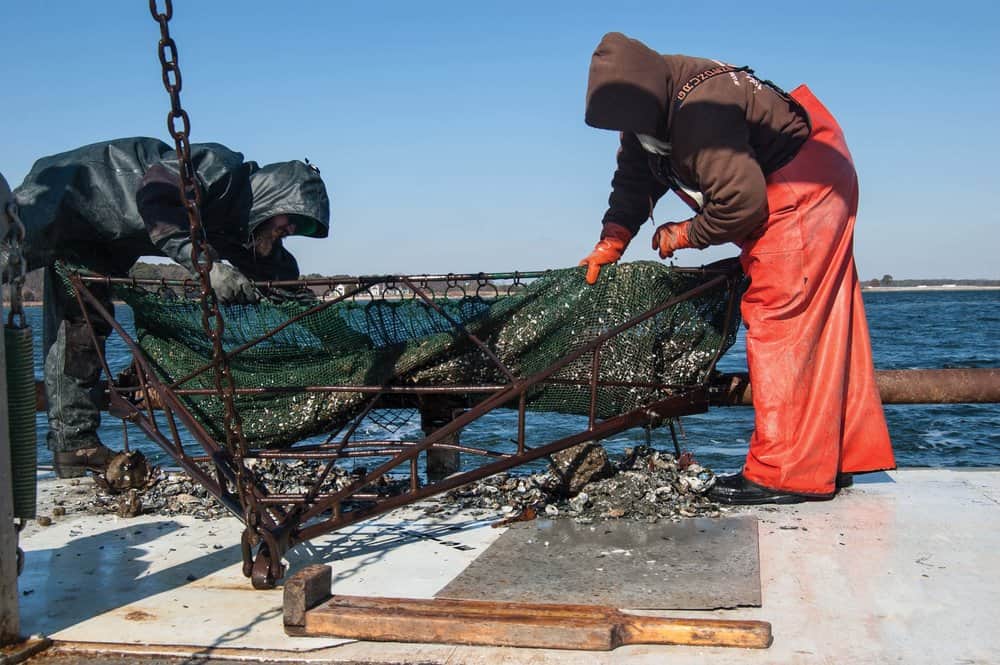
For 50 winter days, they make a crab-knit family. Brown, a native Canadian, spent 10 to 12 years doing contract work for the survey before landing a full-time job five years ago. In addition to crab spotting, she’s Morris’s chief needler, banter the captain happily parries. Miller, keeper of the notebook, describes himself as the newbie, although he’s been doing the work for more than four years. He says he’s learning Morris’s knack for “feeling” bottom composition based on boat vibrations.
Elliott, the bushy-bearded waterman subbing for Mydra Ann’s regular mate, remains outside between dredges. (“He’s got enough whiskers to keep him warm,” Morris quips.) Beads of water freeze in Elliott’s copious facial hair, but he says he prefers constant cold to periodic thermal adjustments if he visits the cabin. It could be genetic. From a family with deep Dorchester County roots, he was hand tonging oysters at 16. Working the water, he says, is all he’s ever wanted to do.
To get a statistically unbiased count, a computer program randomly selects all 1,500 sites. For each of the eight locations Mydra Ann will dredge today, the boat makes a single, exactly one-minute pass to dislodge and count the torpid local inhabitants. (In less challenging conditions, the boat samples more than two-dozen sites daily.)
The crew’s movements are choreographed to the dredge’s dance. When Morris heads to the cockpit controls, Brown and Elliott make their way onto the platform. Miller leaves the cabin last, lingering to record GPS coordinates. He then takes his place in the stern, standing before a rudimentary crab-measuring stick: a mounted board with one raised end and a ruler running its length.
Picking up a listless crab, Miller pokes it. The creature lazily opens its blue-tipped claws. In this chilled state, the crab’s defensive weapons pose little threat to the biologist’s bare finger. Miller flips the crab over to determine its sex, and then turns it upright again. Placing one pointy end of its saw-toothed carapace against the L-shaped end of the board, he notes the crab’s length. Those under 2.4 inches across are young-of-the-year crabs. (The dredge can capture specimens as small as a fingernail.)
Next, Miller picks up a small spring scale and clamps it on one of the crab’s legs to weigh it. After its vital stats are recorded in the biologist’s notebook, the crab finds itself airborne on a return trip home.
When crab measuring is complete, and Brown and Elliott have cleared culled detritus from the platform (which now sprouts lengthening icicles), everyone except the stoic Elliott returns to the cabin until the dredge calls them out again. Miller makes one stop en route, recording the temperature and salinity of a water sample taken at the site. At 1.1 degrees Celsius (about 34 Fahrenheit), the water temperature is warmer than the air, but still perilously cold for crabs.
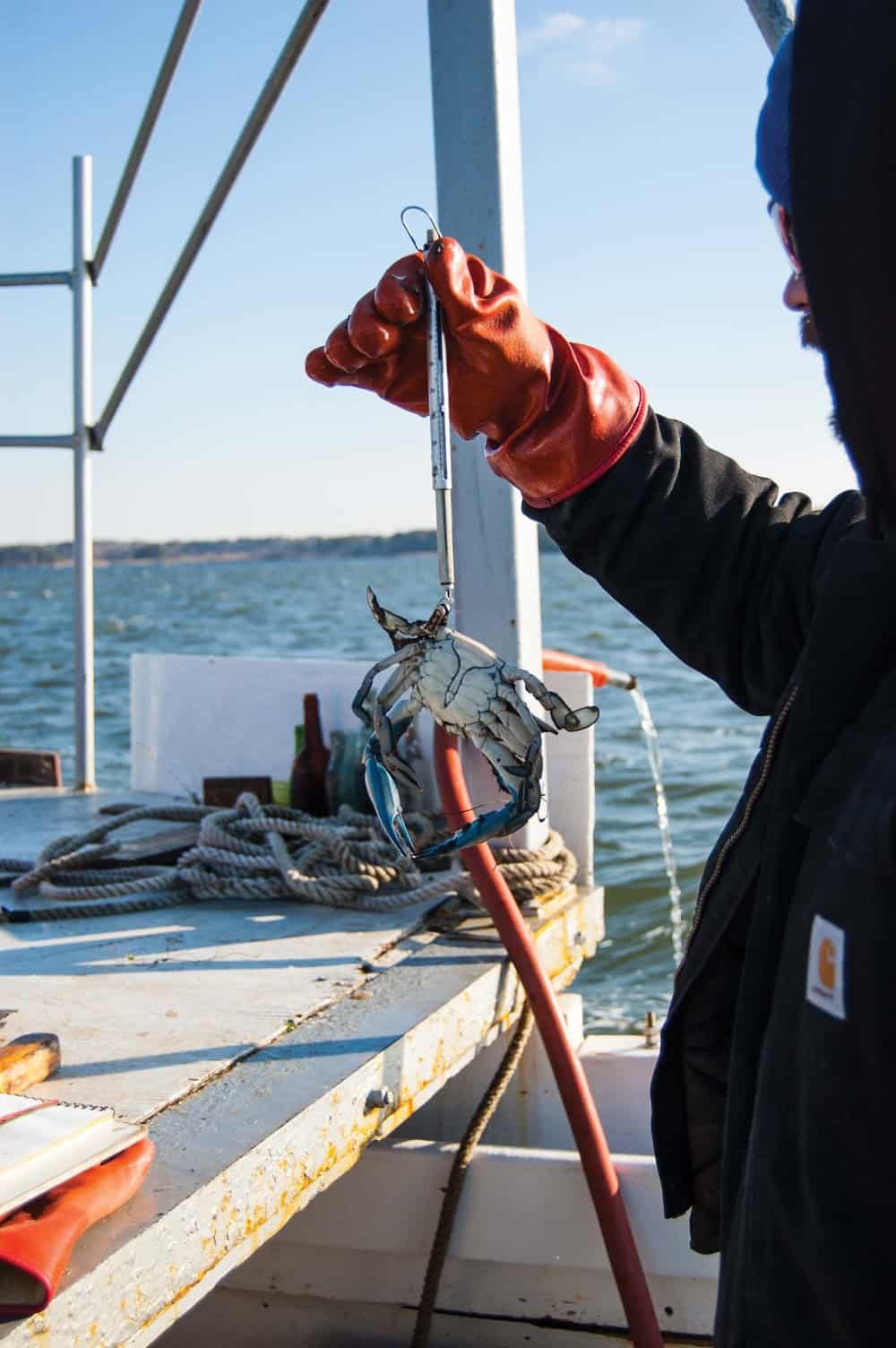
After dredging four locations, Mydra Ann has turned up six crabs, five males and a female. Miller says he’s pleased to see the Jimmies; last year’s survey registered a 16 percent decline in male crabs. About once a week, he inputs his notebook jottings on an office computer. Once fieldwork is complete, state number crunchers take over. Dividing the number of crabs found by the area sampled (distance dredged multiplied by dredge width), scientists determine the average crab density per 1,000 square meters. Combining densities from all 1,500 sites, they estimate crab abundance, making adjustments for winter mortality and other variables. The dredge survey results—released simultaneously by the two states—also include estimates for the number of juvenile crabs, spawning-age females and male crabs. (Results of the 2018 survey were released too late for this issue.)
Dredge bycatch reveals the crabs’ diverse neighborhood. Mydra Ann’s fifth tow finds no crabs, but scores of sea squirts (“toad’s eggs”), greenish-brown gelatinous blobs the size of ping-pong balls, along with a dead goby and an old tire heavily encrusted with barnacles. (Elliott sets the tire aside for more environmentally friendly disposal.)
The dredge has scooped up old bottles, the occasional whale vertebra and a remarkably intact 19th-century crock. On another occasion, the crew found what looked and felt like a cannonball. Brown says they carefully cleaned it, uncovering an inscription: “Wilson.” The relic was an old— and by now artillery-hefty—basketball packed with mud. (CBSAC chairman Davis says survey boats he’s worked on have found everything from live artillery shells to exotic mantis shrimp.)
In Crab Alley Bay, appropriately enough, Mydra Ann dredges up the largest—and last—crab of the day, a Jimmy 6.5 inches across. The final two dredges, in Cox Creek, yield nothing countable, mostly horseshoe crabs and sea squirts. The day’s final tally: seven crabs comprising six males and one female. Morris believes the dredge survey accurately reflects watermen’s reality. “We’re finding pretty much what the crabbers were finding,” he says.
“The abundance estimate is about eighty-five percent of the result in commercial harvest, which is pretty doggone good,” CBSAC’s Davis says. There have been exceptions, notably 2012’s “lost” generation. “We had a huge abundance of juveniles and they just didn’t materialize into the harvest or into adults the following year,” Davis says. Trawl surveys that summer corroborated the winter count. “It wasn’t that the dredge survey was wrong,” he says. “Something happened to those little crabs.”
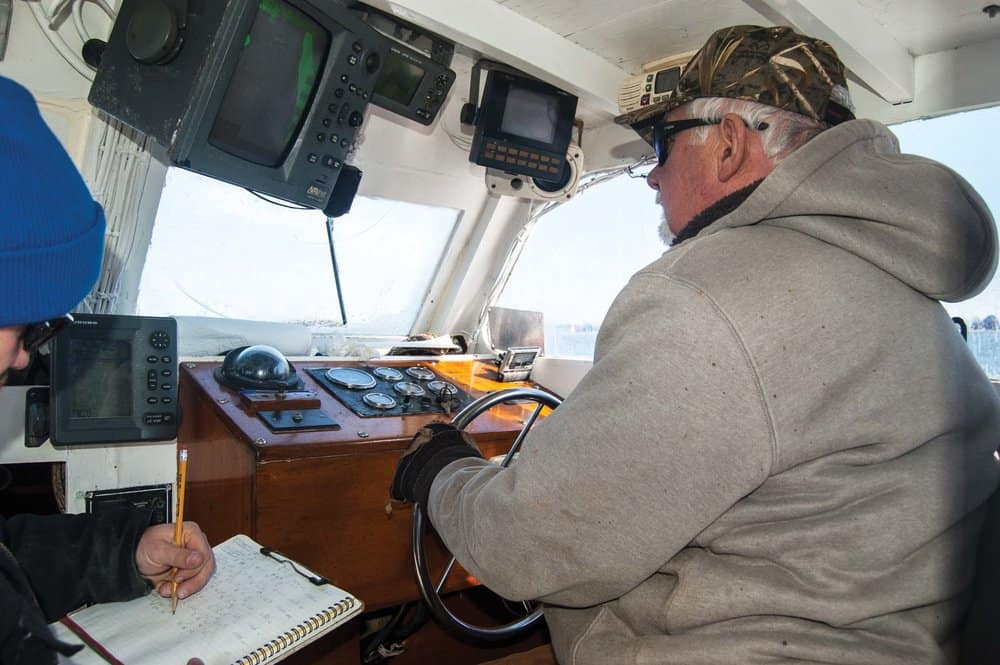
Its dredge secured for the day, Morris points Mydra Ann toward Kent Island and her temporary home in a Kent Narrows boat basin frequented by watermen. When she needs to relocate, the crew can readily secure a slip. “There’s a lot of good will among watermen,” Brown says. “They’ll help us find a spot.”
As the boat picks up speed, Elliott returns to the cabin. The conversation turns to home and hard work: the importance of Sunday family dinners, the plight of watermen (Elliott: “How does a waterman become a millionaire? Start as a billionaire.”), whether Morris hopes his two-month-old grandson will work the water one day (maybe not), the scanty wages of Dorchester County crab-pickers…
By 1:30 p.m., Morris has Mydra Ann back in her slip. The crew prepares to disperse after their abbreviated shift. What’s the first thing they do at the end of a blustery winter workday?
Miller: “Take a shower.”
Brown: “Drink.”
Morris: “Sit by my wood stove.”
Tomorrow, weather willing, they’ll be counting drowsy crabs again, with six more weeks to go. And renowned hibernator Punxsutawney Phil just predicted those weeks will feel a lot like today.
CBM award-winning writer and history buff Marty LeGrand has been covering Chesapeake stories and issues since 1996.

